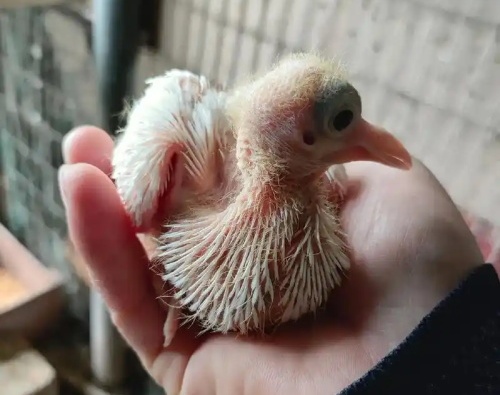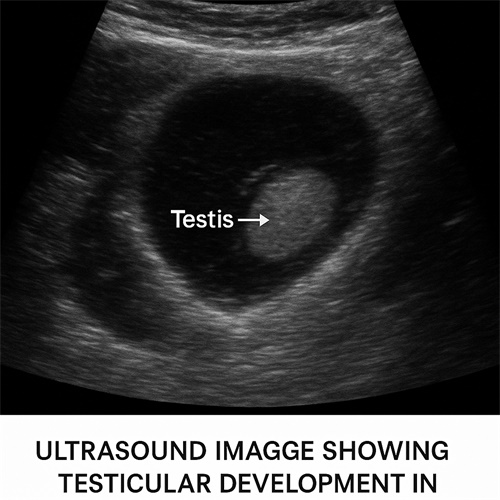Identifying the gender of young pigeons is an essential task in the management and breeding of pigeons. As pigeon farming has grown globally, having the ability to determine the sex of young birds accurately and at an early stage offers breeders various advantages. This is especially true for efficient breeding practices, where knowledge of the sex of young pigeons helps avoid issues related to overcrowding, unwanted breeding, and improper gender ratios. Traditional methods of gender identification can be invasive and require handling that may cause unnecessary stress to the birds. An advanced non-invasive ultrasound technique, such as the BXL-DB20 OPU Veterinary ultrasound, offers an excellent solution for young pigeon gender identification.

Non-Invasive Techniques for Gender Identification
Historically, pigeon breeders have had to wait until the pigeons were older or even until they reached sexual maturity to determine gender, relying on external physical traits. This method is effective but can be imprecise, especially in younger pigeons when external sexual differences may not be readily visible. With the introduction of veterinary ultrasound technology, breeders now have a more reliable, non-invasive method to determine the sex of young pigeons at an earlier age.
The BXL-DB20 OPU Veterinary ultrasound is specifically designed for large animal veterinary use, providing high-resolution imaging that is highly effective for gender identification in birds, including pigeons. This ultrasound device allows for clear visual confirmation of gender by detecting the presence of ovaries in females and testes in males, even in very young pigeons. This technology has greatly improved the efficiency of pigeon farming, offering breeders a tool that can reduce stress for the birds while providing accurate results.

Testicular Development in Breeder Pigeons
For breeder pigeons, monitoring testicular development is crucial for assessing their breeding potential. As male pigeons reach sexual maturity, the testes undergo physical changes that can be observed through ultrasound. By using the BXL-DB20 OPU Veterinary ultrasound, breeders can monitor the development of the testes in male pigeons and make informed decisions about when the birds are ready for breeding.
Testicular size and structure can be evaluated, providing insight into the reproductive health of the pigeon. Early detection of potential problems, such as testicular atrophy or abnormal development, allows for prompt intervention, ensuring the overall health and productivity of the breeding stock.
Understanding the timing of testicular development also helps manage the breeding cycle more effectively. Ultrasound allows breeders to pinpoint the optimal time for pairing male and female pigeons, maximizing the chances of successful breeding and reducing the risk of infertility or unwanted breeding behaviors.
Benefits of Ultrasound Technology in Pigeon Breeding
Early Identification: The ultrasound technique allows for the early identification of gender in pigeons, typically as young as a few weeks old. This means that breeders can start managing their flocks more effectively, ensuring they do not have an excessive number of males or females in the breeding pens.
Non-Invasive: Unlike traditional methods, which may require handling that can stress the birds or involve surgical procedures, ultrasound is non-invasive. It uses sound waves to produce images, so there is no harm or discomfort caused to the pigeons during the process.
Improved Breeding Efficiency: With clear, accurate images, breeders can make better decisions about which pigeons to pair for breeding. The ability to monitor the development of both male and female pigeons ensures that only the healthiest and most viable birds are used in the breeding program.
Health Monitoring: Ultrasound not only helps with gender identification but also provides a useful tool for monitoring the health and development of the pigeons. It can be used to detect issues like tumors, cysts, and other reproductive system abnormalities, allowing for early intervention.
Cost-Effective: While the initial investment in veterinary ultrasound equipment might be high, the long-term savings it offers by improving the accuracy and efficiency of breeding programs outweigh the costs. It also helps in reducing the need for unnecessary handling or breeding trials, saving both time and money.
Conclusion
Ultrasound technology has revolutionized the way pigeon farmers identify the gender of young pigeons and monitor testicular development in breeder pigeons. By offering a non-invasive and highly accurate method, it allows breeders to optimize their breeding programs and ensure the health and productivity of their flocks. The BXL-DB20 OPU Veterinary ultrasound, though originally designed for large animal use, provides a reliable solution for breeders seeking a precise and efficient method of gender identification and reproductive monitoring. The use of ultrasound technology in the poultry and pigeon breeding industries continues to grow, offering new possibilities for improving breeding practices and overall flock health.
tags:


